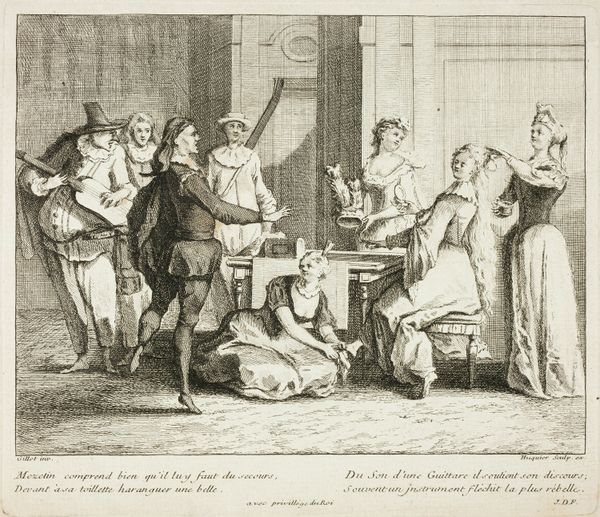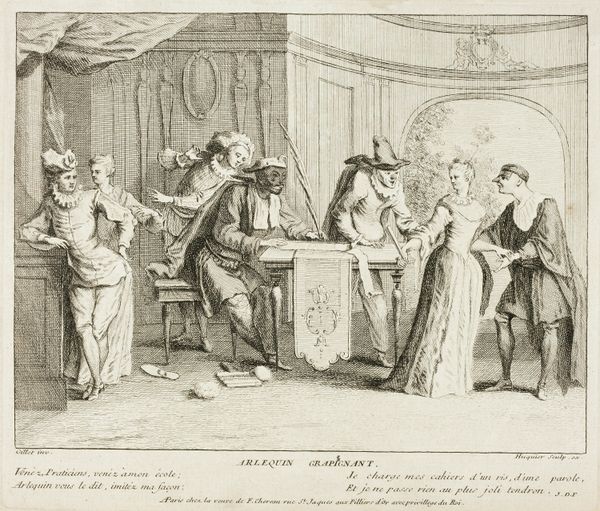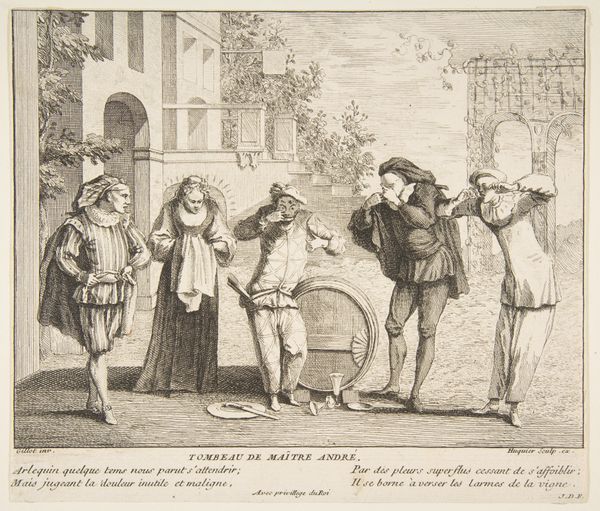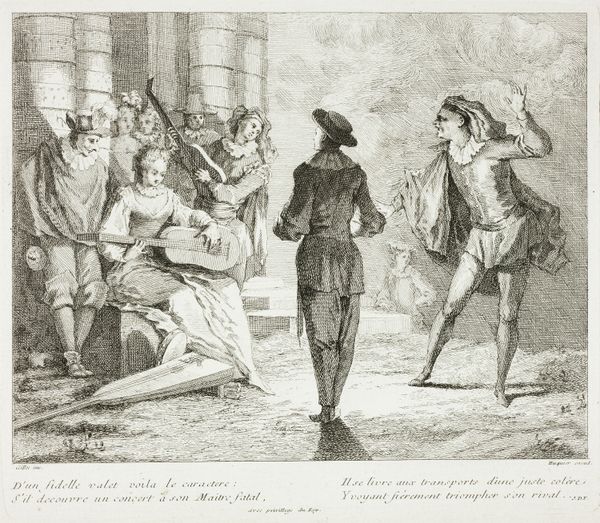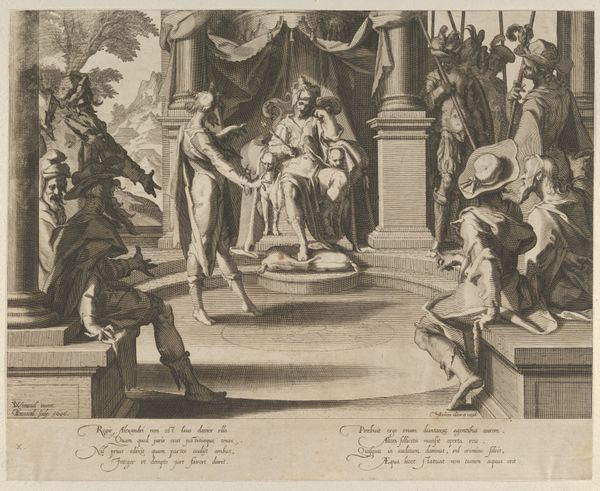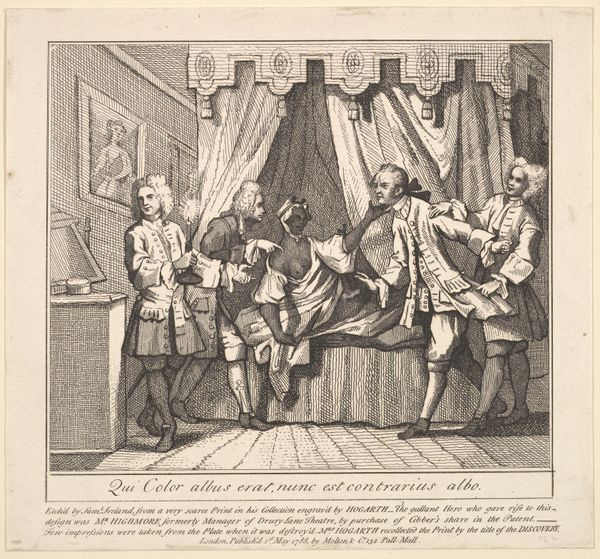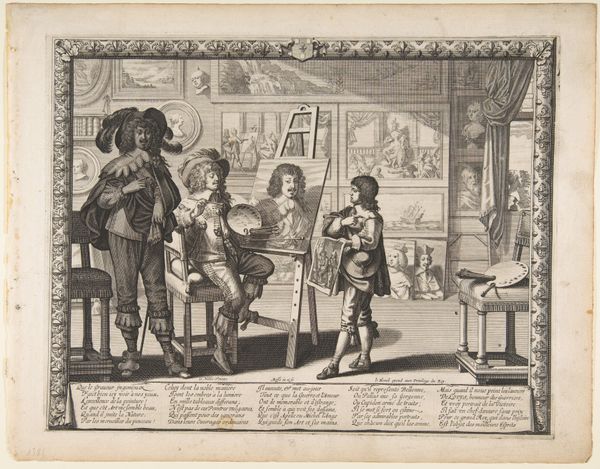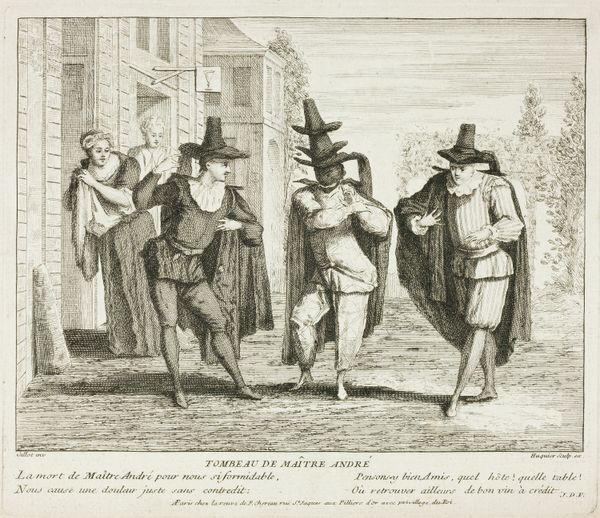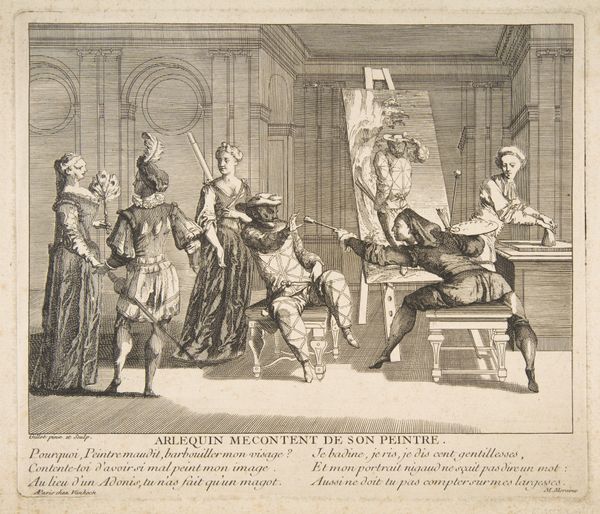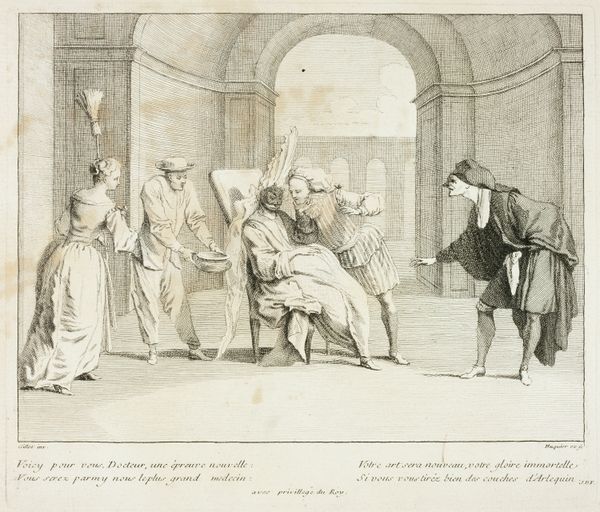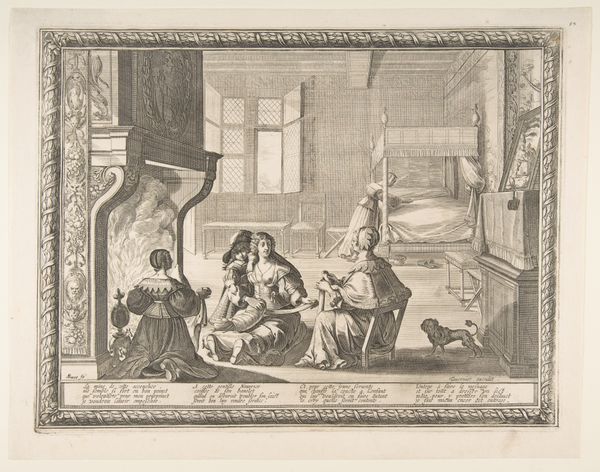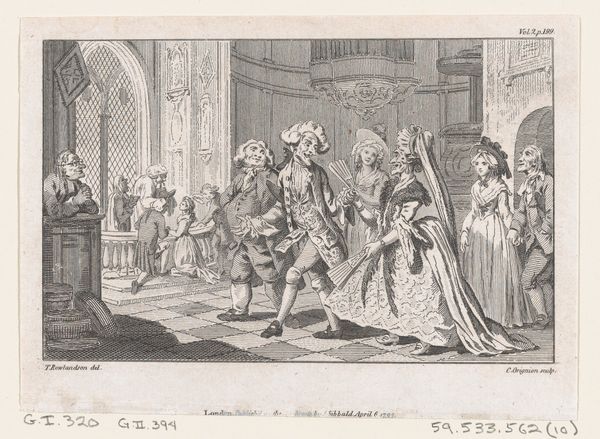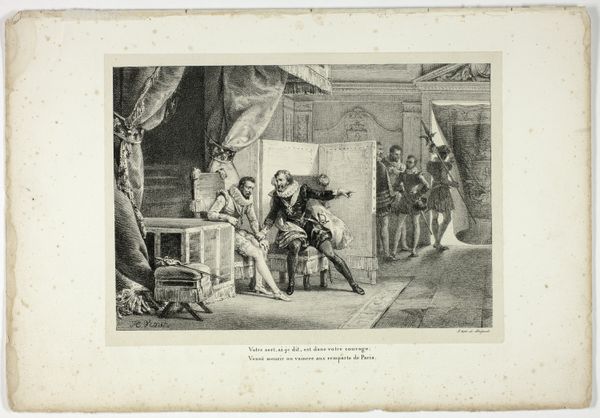
drawing, print, etching, paper
#
drawing
#
narrative-art
#
baroque
# print
#
etching
#
figuration
#
paper
#
genre-painting
Dimensions: 165 × 215 mm (image); 190 × 225 mm (plate); 235 × 315 mm (sheet)
Copyright: Public Domain
Curator: This etching, "Plate from Livre de Scènes Comiques," was created by Gabriel Huquier sometime between 1729 and 1732. It's a striking example of baroque printmaking, currently residing at the Art Institute of Chicago. Editor: My initial impression is one of theatricality. The figures seem posed, and there's a distinct sense of narrative being presented, almost like a scene from a play. The stark lines give it a crisp, almost satirical feel. Curator: Absolutely, the composition is charged with theatricality. Given the period and the title, we can infer this image satirizes aspects of 18th-century Parisian society, maybe critiquing class pretensions. How are identities performed, what do they conceal? And how does the means of pictorial production affect that performance? Editor: It's fascinating how the labor involved in artmaking is somewhat foregrounded. We see the artist’s studio, the tools, and the physical act of portraiture being presented. It raises questions about the value placed on the artwork itself versus the work that constitutes its making. It speaks to how material and skill, but also economic exchanges influence both art and labor within social systems. Curator: That’s precisely it. Huquier uses this medium—a readily reproducible print—to disseminate a critical view of these elites. Note the playwright's mask, which emphasizes roleplay, the making-believe through commodities and gestures, suggesting that identity could, and maybe always is, a masquerade dependent on the prevailing socio-economic conditions of production. How can we disentangle the art object from those economic relationships? I'm also curious what a feminist lens can bring here; do the women have the same performative leeway as men? Editor: By calling attention to that studio, that space of manufacture and production, this artwork, though itself an artwork, pulls back the curtain on its origins as a material object. Curator: It’s more than just documentation; it offers a complex and critical assessment. We see a deliberate deconstruction of authority embedded in its very fabrication. Editor: Indeed, what appears comical on the surface offers a commentary on production, labour, and societal values. I see that satire through the sharp materiality and deliberate presentation. Curator: Ultimately, this print becomes a window into a very specific historical moment, enabling a layered examination of how social roles and art practices are constructed and circulated.
Comments
No comments
Be the first to comment and join the conversation on the ultimate creative platform.
